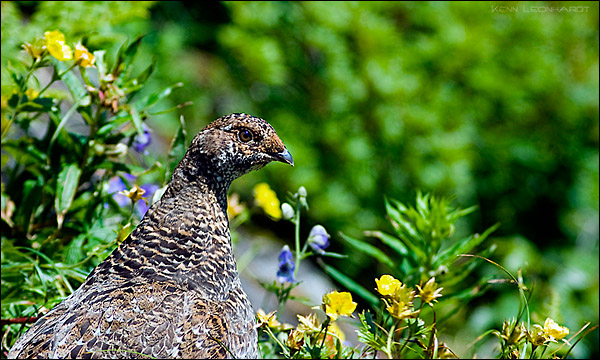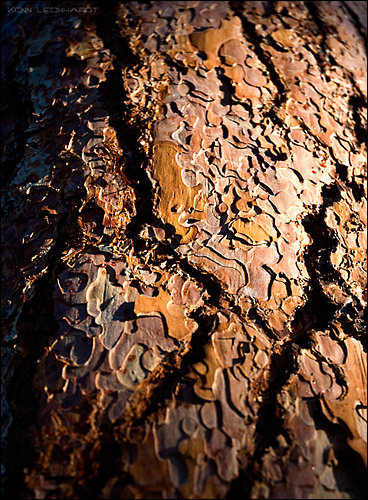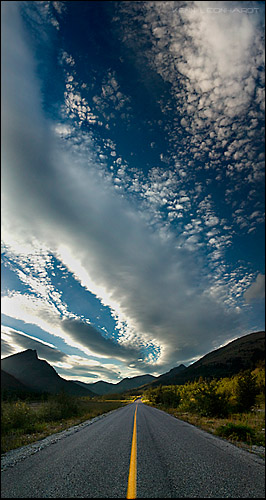Crafting Your Photography Website |
Youíve spent months and years honing your photography skills, yet the odds are that the majority of your photos sit on your hard drive, doing nothing. You should change that! Unless youíre a technophobe or that mysterious closet-photographer who doesnít want anyone to see your photos, why not upload your photos to your own photo website? Setting up a website is as easy as ever and it offers an excellent way to share your photos, while also potentially generating some sales.
Displaying your photography online is no different than displaying it in an art gallery, at a craft sale, or in a magazine. If it's not presented well, no one is going to be interested. Therefore, I offer these seven tips to help you maximize the benefits that you receive from your own photography website.
Determine The Purpose
The absolute first thing you must do is figure out if you really need a website, what you would put on the website, who the users will be, and what you expect the website to do for you. Setting up and running a casual blog is completely different than setting up a professional portfolio designed to make sales. A website that is set up without a clear purpose is destined for failure. Take ample time visiting other peopleís websites to figure out what you like and donít like.
Itís About Exposure, Not Making Money
The reality is that you probably wonít make much, if any, money from your website alone. A good website will bring in some money, but just donít expect to make a living off of it. Given the nature of art, unless a person knows you, or has seen your photography prints in person, itís unlikely that theyíll stumble across your website and randomly buy prints. Websites are about getting your name out there, and making it easier for people to contact you. That is why, when used in combination with art fairs, magazine submissions, and other marketing efforts, a website can definitely help seal the deal.

Keep vibrant colours and busy patterns constrained to the photos. When it comes to fonts, backgrounds, and anything else beyond the photos themselves, neutrality and simplicity are your best friends.
Custom or Commercial
Based on your findings from point 1 and your attitude toward point 2, you should have a clear idea as to whether you want a custom-made site or if an existing template or commercial package is more suitable. High-quality, custom-made sites will typically have a much higher capital cost, but should have reasonable long-term operating costs, and they will obviously do a much better job of meeting your requirements when made properly. Templates and commercial packages are more limiting, but they are more financially viable, sometimes even free. In general, I recommend starting out with a template or commercial package so that you become acquainted with running a photography website. After a year, you will know if itís worth your while to upgrade.
Appear Professional, Even If You Arenít
- Buy a domain (e.g., yourname.com). Itís usually only $10 per year and will serve you much better than a URL like www.SuperCheapoHosting4U.com/JSmithProPhoto123.
- Edit, edit, edit. Spelling mistakes, dead links, outdated content, and perhaps the worst of them all, internet lingo, should be nowhere in sight.
- Include a short blurb about who you are. Donít pretend to be something youíre not.
- Use a logical organization system.
- Be concise.

Photography websites abound and you are just another tree in the forest. Don't overlook the little details - they are what set you apart.
Unique Versus Usable
Creating a unique, eye-catching website is vital to attracting users, but it is all in vain if the website isnít usable and subsequently drives the users away. Inconsistent layouts between pages, small text, low contrast, overcrowding, long loading times, poor navigation, horizontal scrolling and so forth all need to be seriously considered. Entire websites are devoted to the topic of website usability, so become familiar with the main principles while you develop the site, and do a complete usability assessment before launching the site to the public.
Be Selective
Donít just add content to your site for the sake of adding content. If you have 10 nearly identical photos of Mt. St. Helens, upload only the best one. While having regular updates is important for getting visitors to return to your site, you shouldnít sacrifice quality for quantity. Also, if you track how users interact with your site with usage statistics from your hosting provider, youíll eventually see what grabs visitorsí attention and what doesnít. Always show your best side.
Donít Underestimate the Workload
This, along with point 1, is what will make or break your website. The tools for creating and maintaining websites have evolved tremendously over the past decade, but that doesnít mean that creating and operating a website is a simple task. If you expect to gain anything from your website, you will need to put in many hours keeping the content fresh, and most importantly, marketing yourself. At first it may seem manageable, but as the months go by, chances are that your enthusiasm will wane. The sooner you acknowledge this, the easier it will be for you to remain persistent and keep your website alive and well. Even after roughly ten years of operating various websites, this is an issue that still plagues me and most people I know.

Building and running a successful website is a long and labourious journey, but it can be very rewarding.
Having your own photography website can be very rewarding, but it can also be a disappointment. It depends on your attitude and effort. Just like a pet, if you feed it, love it, and otherwise take care of it, it should treat you well. If you neglect it, itíll show.
There are thousands of free resources available to help you get started on putting together your own site, so you should at least explore the idea of creating your own site. Compared to the costs associated with other aspects of photography such as equipment and courses, you have little to lose and plenty to gain.
Recommended Resources
NPN Member Sites Develop ideas and designs by visiting other photographerís websites.
NPN Photo Marketing Forum Opinions and advice on various website services, hosts, designers, and features.
Comments on NPN digital nature photography articles? Send them to the editor. NPN members may also log in and leave their comments below.
Kenn Leonhardt is a nature photographer based in Calgary, Alberta Canada. Much more of his work can be seen at his website, www.kennleonhardt.com.